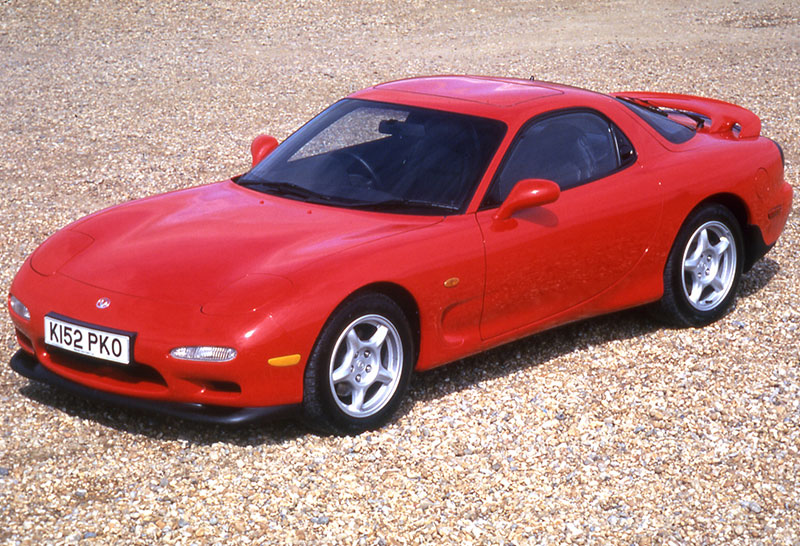

Mazda’s RX-Vision Concept drew gasps at the Toyko Motor Show. Then follow-up questions, almost immediately, skepticism coming on with the rapidity of a sequential turbocharging. Why bother? Why chase it? Why still with this Wankel rotary engine nonsense?
When every other manufacturer has abandoned an engine technology, why keep throwing precious R&D dollars at an oddity? If you’ve driven the previous RX-8, you know a rotary engine lacks torque; it you’ve driven a third-generation twin-turbo RX-7, you know it has prodigious thirst for oil and fuel, and questionable reliability.
If you have driven them hard, though, threaded the needle across some wriggly mountain touge blacktop—little triangular engine internals spurred up and singing to redline—then maybe you get it. A rotary-powered machine isn’t the easiest to live with, nor as straightforward as a tried-and-true aluminum-block V8. But there’s something special about it.

It’s interesting. It’s unique. It’s won a race or two. And now Mazda thinks it knows how to bring the rotary back.
Aussie auto website Motoring.com.au claims they’ve got a copy of Mazda’s recipe for curing the rotary’s emissions and consumption-related symptoms. According to their sources, this next generation car engine will debut in 2017, the fiftieth anniversary of the Cosmo Sport, and will again feature twin-turbocharging. This time, though, it’ll be of the electric variety.
Using a capacitor-fed electric turbo at low revs to boost torque, and a conventional exhaust-driven turbocharger at higher revs, the new Skyactiv-R engine will allegedly double the output of the RX-8’s old Renesis. There’s increase in displacement, up to 1.6 liters, and the adoption of one of Mazda’s nuttier recent high-compression engine features: homogenous charge compression ignition. Yes, spark-free compression. Mazda’s already managed to get prototype four-cylinder gas engines to run under low load with a clean-burning cycle that doesn’t use sparkplugs, and the technology is allegedly pegged to getting this new rotary to idle without spewing pollutants.

Add in a rear-mounted transaxle, (probably) a dual-clutch transmission, manage a curb weight around 3,100 pounds, and we’re talking about a Porsche 911-fighting sports car here. Skepticism remains, and rightly so. The Aussie report also claims a target output of 450 horsepower, and calls the production model RX-9; the validity of either is anyone’s guess. But the rumor mill might be grinding some factual grist.
First, the production version of the RX is reportedly targeted to be 8 or so inches shorter than the ridiculously long-nosed concept. Mazda’s work on both capacitors technology, multi-point injectors, and high-compression burn is all well into production. You can buy a Mazda6 family sedan with all this stuff. That makes it primed to sit on a new flagship, the range-topping trumpet of progress. The execs don’t approve sports cars without a purpose, a business case; a sleek, new coupe loaded with all Mazda’s tech is the right advertising vehicle.

Most importantly, there’s the example of the MX-5, the new Miata. Everyone claims new cars will just keep getting bigger, fatter, with sturdier components to meet safety regulations and more standard options to meet those of customers. Neither Porsche nor BMW could keep electric power steering from numbing the helms of their best cars. And yet, here’s Mazda, delivering up a machine that still shines with the spirit of the original icon.
If and when we get a new rotary-powered RX, it’ll undoubtedly be incredibly complex, just as the FD-chassis cars were. It’ll be crammed with technology, and powered by a spinning heart championed by only a single company. There’ll be some head scratching; this thing won’t be for everyone. It’ll be an acquired taste. Our appetite is whetted.